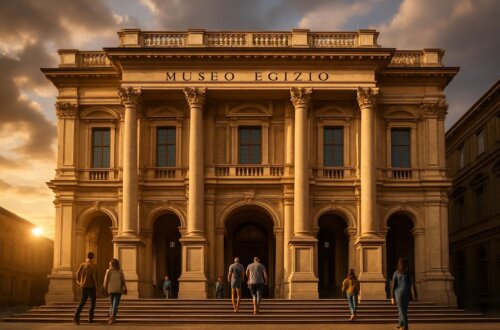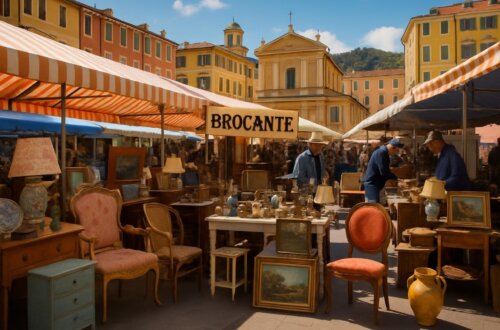
Maritime Museum of Crete Chania: Explore Crete’s Rich Naval History
Maritime Museum of Crete Chania: A Complete Guide to Crete’s Rich Naval History
Crete has long been a crossroads of cultures, commerce, and naval power in the Mediterranean. The island’s strategic location made it a prized possession for empires such as the Venetians, Ottomans, and later modern Greece. Today, visitors can explore this rich maritime heritage at the Maritime Museum of Crete Chania, a treasure trove of naval history and a must-visit for anyone interested in ships, seafaring, and the stories of those who lived by the sea.
Whether you are a history enthusiast, a curious traveler, or a family looking for an educational adventure, the Maritime Museum of Crete offers a journey through centuries of naval history. This guide will provide a thorough exploration of the museum’s history, exhibits, practical visitor tips, nearby attractions, and insider advice to help you make the most of your visit.

History of the Maritime Museum of Crete Chania
The Maritime Museum of Crete Chania was established in 1973 by a dedicated group of naval officers and historians committed to preserving Crete’s maritime legacy. Situated near Chania’s iconic Venetian harbor, the museum celebrates the island’s centuries-long relationship with the sea.
Origins and Founding Purpose
The museum was conceived at a time when local naval history risked being forgotten. Its founders sought to collect artifacts, ship models, documents, and personal accounts that chronicled the seafaring life of Cretans through different eras.
Significant Historical Exhibits
- Venetian Period: During the 13th–17th centuries, Crete was under Venetian rule. The museum displays ship models, weaponry, and navigation tools from this period, offering insight into how the Venetians protected their trade routes and controlled the Mediterranean waters.
- Ottoman Era: Artifacts from the Ottoman period showcase how maritime trade and naval defense evolved under a new ruling power, including cannons, naval maps, and merchant ship replicas.
- World War II: Crete’s strategic location made it a key battleground during WWII. The museum features detailed exhibits about the Battle of Crete, including models of German and Allied naval ships, wartime documents, and personal belongings of sailors and soldiers.
- Modern Maritime Practices: The museum also highlights Greece’s modern naval development, showing how Crete transitioned from traditional sailing vessels to modern ships.
Visiting the museum offers a chronological journey through Crete’s maritime past, helping visitors understand the island’s pivotal role in shaping naval history in the Mediterranean.
Sources: Museum archives, official website, local history references.
Location and How to Get There
The museum is conveniently located near the Chania Old Harbor, making it an easy stop for tourists exploring the city.
Address: 5 Chalidon Street, Chania, Crete, Greece
How to Reach the Museum
- By Foot: From the Old Venetian Harbor, it’s only a 5–10 minute walk. Perfect for tourists staying in the city center.
- By Car: Nearby parking is available, though it can fill up during peak tourist seasons, so early arrival is recommended.
- By Public Transport: Local buses run frequently from Chania town center, stopping near the harbor.
Visitor Tip: Plan to visit early in the morning to enjoy the museum and harbor before it gets crowded. The nearby waterfront cafes also offer a scenic breakfast option before your exploration.
Exhibits and Collections
The museum is celebrated for its diverse and meticulously curated exhibits, offering a comprehensive view of Crete’s maritime history.
Permanent Exhibits
- Ship Models:
- Includes replicas of warships, merchant vessels, and ancient Cretan ships.
- Each model is detailed, often with descriptions of its historical significance and usage.
- Naval Artifacts:
- Helmets, uniforms, cannons, and navigational tools.
- Items such as sextants, compasses, and charts reveal the technological advancements of Cretan sailors.
- Photographs and Maps:
- Archival images of naval battles and harbor life.
- Ancient and modern maps illustrate trade routes, battle strategies, and maritime geography.
- World War II Exhibits:
- Focused on Crete’s strategic role during the war.
- Personal belongings of sailors and soldiers, including letters and diaries, bring history to life.
- Interactive Displays:
- Multimedia stations allow visitors to explore ship navigation, naval battles, and maritime strategy.

Special Exhibitions
- Rotating temporary exhibits often highlight specific topics, such as underwater archaeology, the life of fishermen, or Cretan naval heroes.
- These exhibitions keep repeat visits fresh and engaging.
Visiting the Museum: Practical Tips
A successful visit depends on knowing the essential details:
Opening Hours
- Summer (April–October): 10:00 AM – 6:00 PM
- Winter (November–March): 10:00 AM – 3:00 PM
Ticket Prices
- Adults: €5
- Children/Students: €2–3
- Free entry for children under 6
Visitor Experience
- Guided Tours: Available in English and Greek. Guides provide in-depth knowledge, historical context, and stories behind the artifacts.
- Photography Policy: Allowed in most areas; flash is prohibited to protect sensitive artifacts.
- Recommended Duration: 1.5–2 hours for a full exploration.
Insider Tip: Joining a guided tour not only enriches your understanding but also allows access to anecdotal stories that aren’t available in exhibit labels.
Educational and Cultural Programs
The Maritime Museum of Crete also serves as an educational and cultural hub, providing learning experiences for visitors of all ages.
Workshops and Learning
- Hands-on workshops teach students about navigation, shipbuilding, and traditional seafaring skills.
- Workshops often include interactive activities like knot-tying, map reading, and building small ship models.
Lectures and Seminars
- Seasonal lectures cover topics like naval warfare, ancient trade routes, and notable Cretan naval figures.
- Experts often provide context connecting local history to broader Mediterranean history.
Community Engagement
- The museum partners with schools, cultural organizations, and universities to promote maritime heritage.
- Temporary exhibitions and cultural events encourage locals and tourists to engage deeply with Cretan maritime history.
Nearby Attractions and Things to Do
Maximize your visit by exploring the surrounding area:
- Chania Old Harbor:
- A beautiful Venetian harbor ideal for strolls, photography, and dining.
- Iconic lighthouse views at sunset make for a memorable experience.
- Archaeological Museum of Chania:
- Just a short walk from the harbor, this museum showcases Minoan and classical artifacts.
- Local Cuisine:
- Waterfront tavernas serve fresh seafood and traditional Cretan dishes. Recommended spots include Tamal and Salis.
- Shopping:
- Local markets sell olive oil, handmade crafts, jewelry, and souvenirs.
- Walking Routes:
- A harbor walk combined with a museum visit creates a rich half-day itinerary.

Tips for Making the Most of Your Visit
Enhance your museum experience with these insider suggestions:
- Best Photo Spots: Near ship models, harbor-facing windows, and interactive exhibits.
- Timing Your Visit: Early morning or late afternoon provides optimal light for photography and fewer crowds.
- Combine Experiences: Pair your museum visit with a harbor boat tour to see Chania from a sailor’s perspective.
- Seasonal Considerations: Spring and autumn offer mild weather, perfect for exploring both the museum and surrounding attractions.
Conclusion
The Maritime Museum of Crete Chania is more than a collection of artifacts; it’s a gateway to understanding the island’s deep and enduring connection to the sea. Visitors can explore meticulously crafted ship models, historic naval artifacts, WWII exhibits, and interactive displays, all offering a rich, immersive experience.
Whether you are a solo traveler, a family seeking an educational day out, or a history enthusiast eager to explore Crete’s naval past, the museum offers insights and experiences that are both informative and inspiring.
Call to Action: Plan your visit today, explore Chania’s Venetian harbor, and immerse yourself in Crete’s maritime legacy. Share your experiences with friends or leave a comment about your favorite exhibit to engage with fellow travelers.
Featured Image Suggestion: Exterior view of the museum with the Venetian harbor in the background at sunset.
Recommended Internal and External Links
- Internal: Articles about Chania Old Town, Venetian Harbor, Crete sightseeing guides.
- External:
- Maritime Museum of Crete Official Website
- Chania Tourism Guide
- Greek Ministry of Culture




